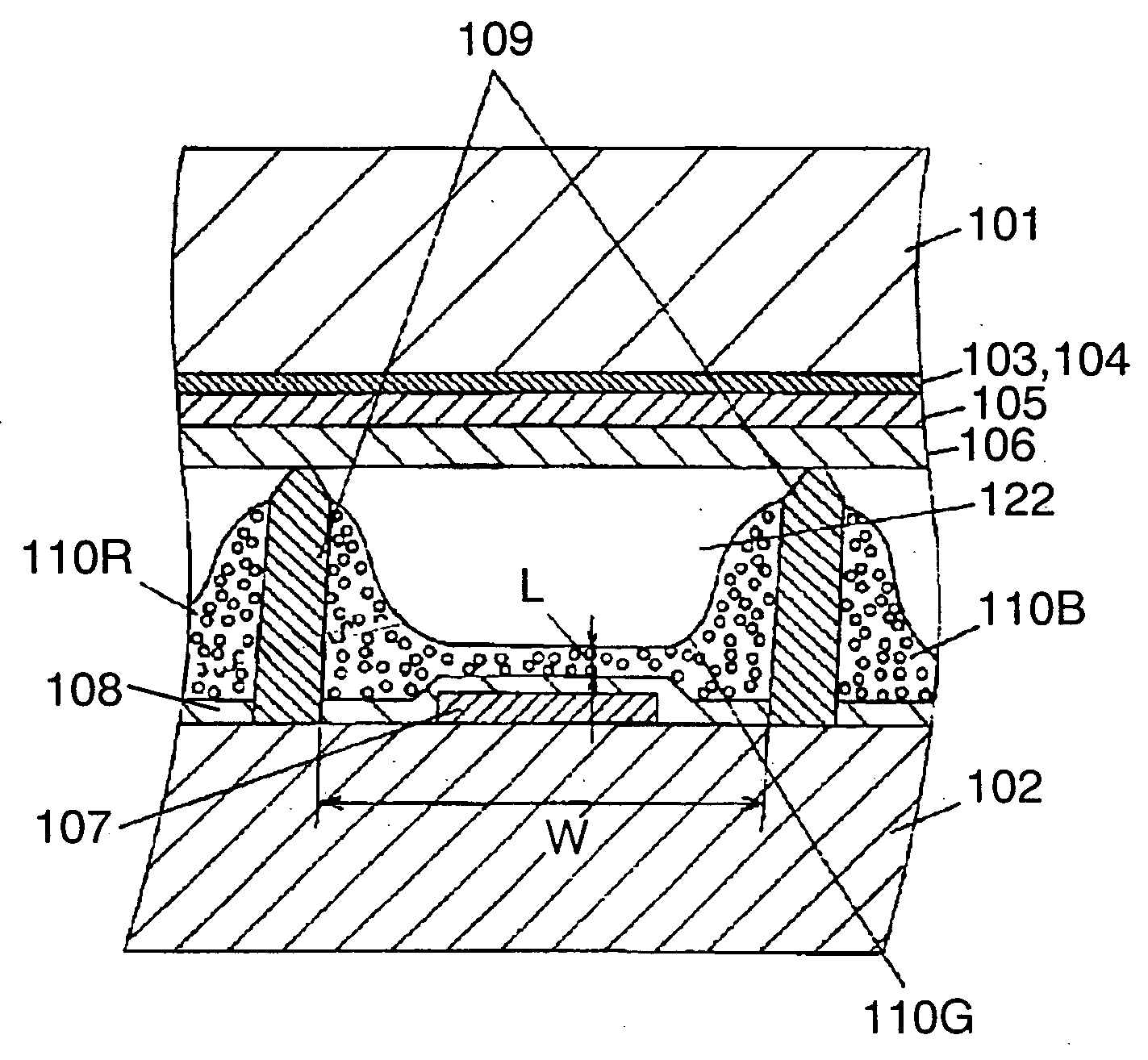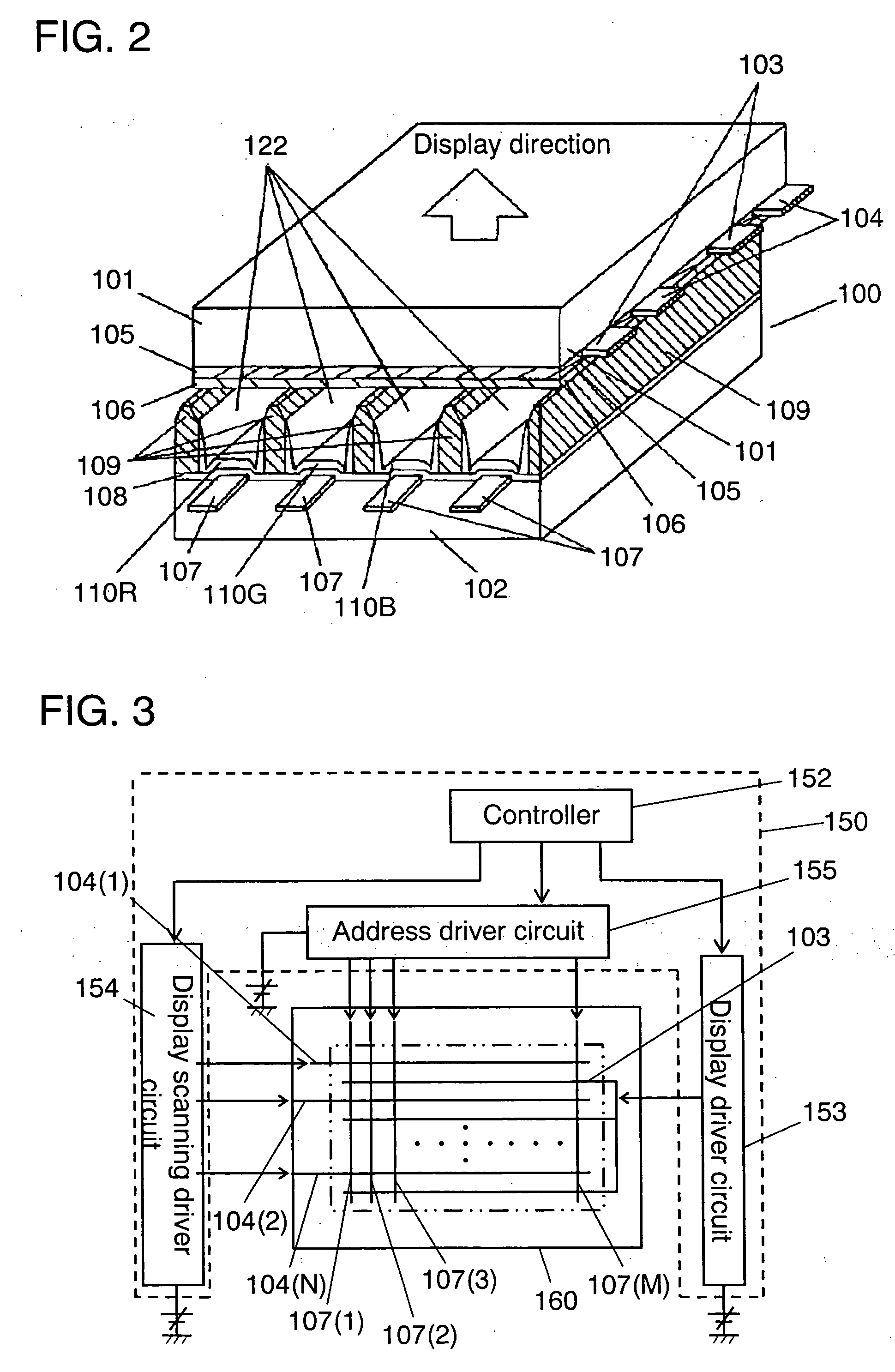Plasma display unit
a technology of display unit and plasma, which is applied in the direction of discharge tube luminescnet screen, gas-filled discharge tube, address electrode, etc., can solve the problems of increased surface area of phosphor, increased positive charge, and reduced oxygen defects near the ba--o layer. , the effect of increasing the positive charge and significantly increasing the positive charg
- Summary
- Abstract
- Description
- Claims
- Application Information
AI Technical Summary
Benefits of technology
Problems solved by technology
Method used
Image
Examples
experiment 1
[0086] (Experiment 1)
[0087] Luminance and change in luminance of the blue phosphor of Specimens 1 to 9 and Comparisons 10 and 11 are measured after the phosphor-firing step (at 520.degree. C. for 20 hr), and then irradiation of 147 nm ultraviolet rays (using HD0012 excimer lamp, Ushio Corporation) for 100 hours in the rear panel manufacturing process.
experiment 2
[0088] (Experiment 2)
[0089] Luminance and change in deterioration of luminance of the blue phosphor are measured while lighting the panel with each color. Discharge maintenance pulses of 200 V and 100 kHz are applied continuously to the plasma display device for 100 hours, and the panel luminance is measured before and after applying the pulses. The rate of change in deterioration of luminance [(luminance before pulse application-luminance after pulse application) / luminance before pulse application.times.100]] is calculated from the measured values.
experiment 3
[0090] (Experiment 3)
[0091] Luminance when only blue is lighted over the entire face of the panel is measured while applying 180 V and 50 kHz to the display electrodes of the plasma display device.
[0092] An address error at address discharge of the plasma display device is visually determined by whether flickering exists in the displayed image. If there is flickering even at one point, it is determined as the presence of an address error.
[0093] Table 2 shows luminance and change in deterioration of luminance of the blue phosphor layer in Specimens 1 to 3.
[0094] As shown in Table 2, Comparisons 10 and 11 in which La does not substitute for Ba in the blue phosphor, and Specimen 11 in which trivalent Eu ions do not substitute for divalent Eu ions show a large rate of deterioration of luminance when 147-nm ultraviolet rays or the maintenance discharge (pulses of 200 V at 100 kHz for 100 hours) are applied. Specimen 10, in which La substitutes for 35% of Ba, and trivalent Eu ions substit...
PUM
| Property | Measurement | Unit |
|---|---|---|
| particle diameter | aaaaa | aaaaa |
| particle diameter | aaaaa | aaaaa |
| wavelength | aaaaa | aaaaa |
Abstract
Description
Claims
Application Information
 Login to View More
Login to View More - R&D
- Intellectual Property
- Life Sciences
- Materials
- Tech Scout
- Unparalleled Data Quality
- Higher Quality Content
- 60% Fewer Hallucinations
Browse by: Latest US Patents, China's latest patents, Technical Efficacy Thesaurus, Application Domain, Technology Topic, Popular Technical Reports.
© 2025 PatSnap. All rights reserved.Legal|Privacy policy|Modern Slavery Act Transparency Statement|Sitemap|About US| Contact US: help@patsnap.com



